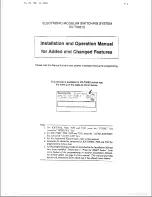
a: 10 klx
b: 40 klx
c: 80 klx
Statistical error in mm (in)
0
0
40
(131.2)
50
(164.1)
60
(196.9)
5
(0.20)
10
(0.39)
15
(0.59)
20
(0.79)
Object distance in m (ft)
20
(65.6)
10
(32.8)
30
(98.4)
c
b
a
Figure 11: Statistical error for
white objects
as a function of object distance for various ambient
light influences
a: 10 klx
b: 40 klx
c: 80 klx
Statistical error in mm (in)
0
0
5
(16.4)
15
(49.2)
20
(65.6)
25
(82.0)
5
(0.20)
10
(0.39)
15
(0.59)
20
(0.79)
Object distance in m (ft)
10
(32.8)
30
(98.4)
c
b
a
Figure 12: Statistical error for
black objects
as a function of object distance for various ambient
light influences
3.6.6
Object sizes
As the distance from the device increases, the laser beam expands. As a result, the
diameter of the light spot on the surface of the object increases.
1
2
Figure 13: Beam expansion
1
Expanded laser beam
2
Optical axis
Values required to calculate the light spot size:
•
Light spot size on the device cover: 7 mm (rounded up)
•
Divergence of 1 light spot: 0.59 deg (10.4 mrad)
•
HDDM+ supplement (1 spot comprises several superimposed individual pulses):
0.50 deg (8.7 mrad)
Formula for calculating the light spot width:
PRODUCT DESCRIPTION
3
8024927/1AZF/2021-05-10 | SICK
O P E R A T I N G I N S T R U C T I O N S | MRS1000P
17
Subject to change without notice
















































